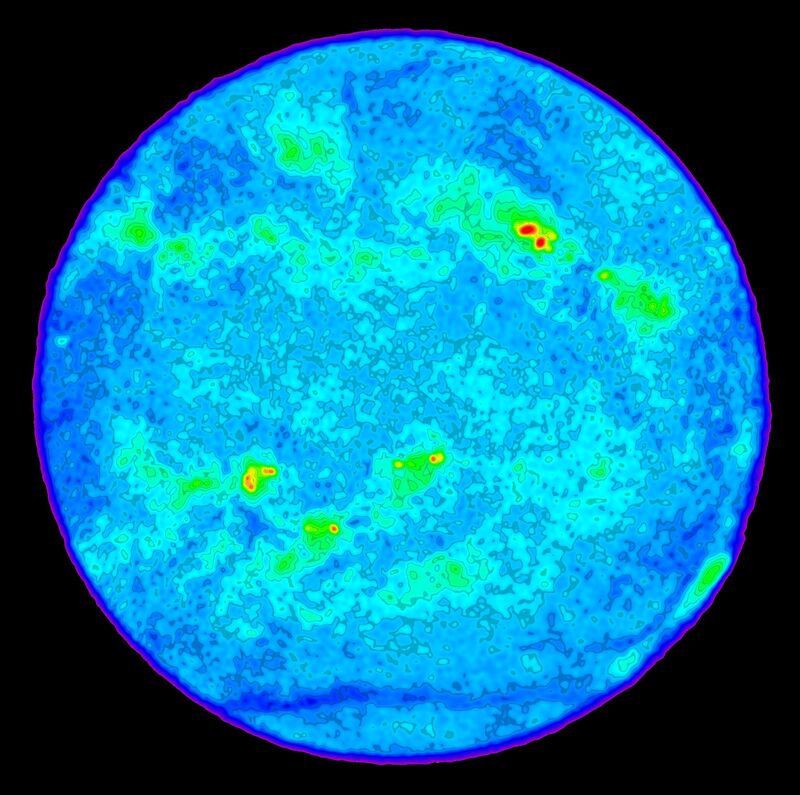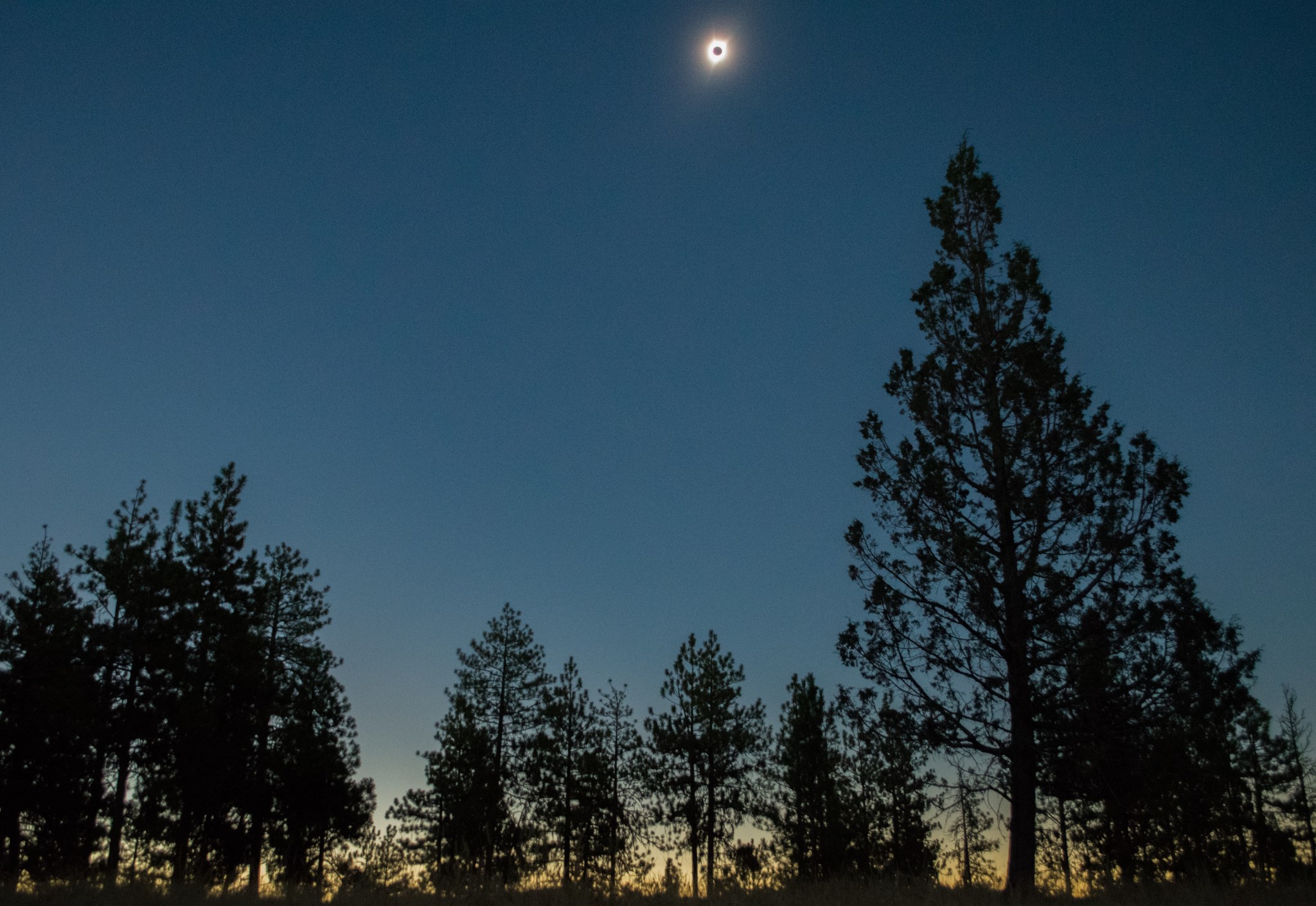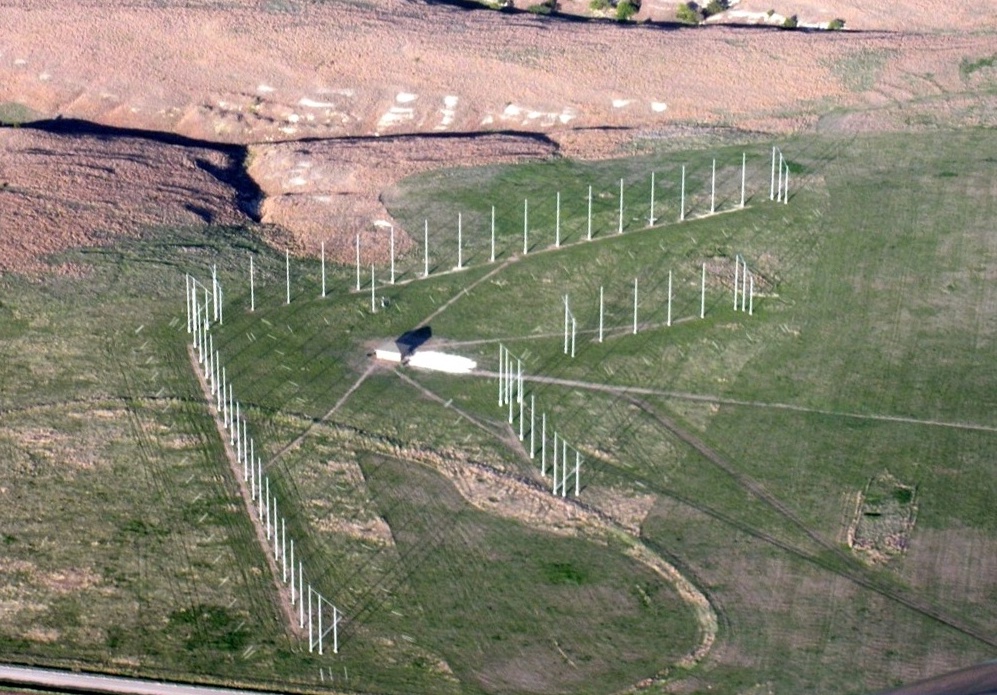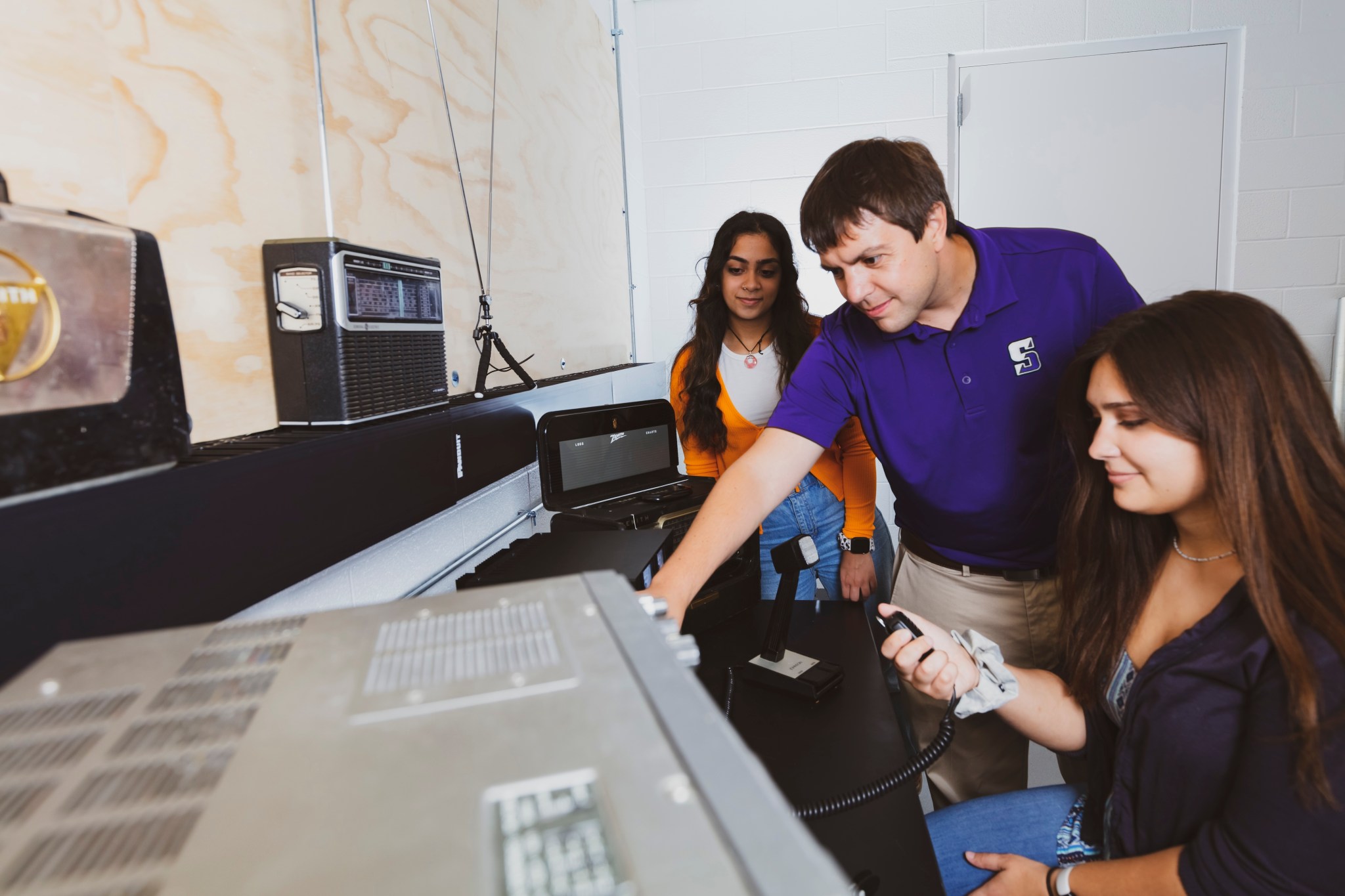On April 8, 2024, a total solar eclipse will cross parts of the United States. For millions of people along the path of totality, where the Moon will completely cover the Sun, it may feel like an eerie daytime darkness has descended as temperatures drop and wind patterns change. But these changes are mild compared to what happens some 100 to 400 miles above our heads in an electrically conductive layer of our atmosphere known as the ionosphere, where the “false night” of an eclipse is amplified a hundredfold. Three NASA-funded experiments will investigate the eclipse’s effects on the ionosphere through the power of radio, a technology well suited to studying this enigmatic layer of our atmosphere.
Whether you’ve heard of the ionosphere or not, you’ve likely taken advantage of its existence. This electric blanket of particles is critical for long-distance AM and shortwave radio. Radio operators aim their transmitters into the sky, “bouncing” signals off this layer and around the curvature of Earth to extend their broadcast by hundreds or even thousands of miles.
The ionosphere is sustained by our Sun. The Sun's rays separate negatively charged electrons from atoms, creating the positively charged ions that the ionosphere is named for. When night falls, over 60 miles of the ionosphere disappears as ions and electrons recombine into neutral atoms. Come dawn, the electrons are freed again and the ionosphere swells in the Sun’s illumination – a daily cycle of “breathing” in and out at a global scale.
A total solar eclipse is a scientific goldmine – a rare chance to observe a natural experiment in action. On April 8 the three NASA-funded projects listed below are among those “tuning in” to the changes wrought by a blotted-out Sun.
SuperDARN
The Super Dual Auroral Radar Network, or SuperDARN, is a collection of radars located at sites around the world. They bounce radio waves off of the ionosphere and analyze the returning signal. Their data reveals changes in the ionosphere’s density, temperature, and location (i.e. movement).
The 2024 eclipse will pass over three U.S.-based SuperDARN radars. A team of scientists led by Bharat Kunduri, a professor at the Virginia Polytechnic Institute and State University, have been busy preparing for it.
“The changes in solar radiation that occur during a total solar eclipse can result in a ’thinning’ of the ionosphere,” Kunduri said. “During the eclipse, SuperDARN will operate in special modes designed to monitor the changes in the ionosphere at finer spatiotemporal scales.”
Kunduri’s team will compare SuperDARN’s measurements to predictions from computer models to answer questions about how the ionosphere responds to a solar eclipse.
HamSCI
While some experiments rely on massive radio telescopes, others depend more on people power. The Ham Radio Science Citizen Investigation, or HamSCI, is a NASA citizen science project that involves amateur or “ham” radio operators. On April 8, ham radio operators across the country will attempt to send and receive signals to one another before, during, and after the eclipse. Led by Nathaniel Frissell, a professor of Physics and Engineering at the University of Scranton in Pennsylvania, HamSCI participants will share their radio data to catalog how the sudden loss of sunlight during totality affects their radio signals.
This experiment follows similar efforts completed during the 2017 total solar eclipse and the 2023 annular eclipse.
“During the 2017 eclipse, we found that the ionosphere behaved very similar to nighttime,” Frissell said. Radio signals traveled farther, and frequencies that typically work best at night became usable. Frissell hopes to continue the comparison between eclipses and the day/night cycle, assessing how widespread the changes in the ionosphere are and comparing the results to computer models.
RadioJOVE
Some radio signals don’t bounce off of the ionosphere – instead, they pass right through it. Our Sun is constantly roiling with magnetic eruptions, some of which create radio bursts. These long-wavelength bursts of energy can be detected by radio receivers on Earth. But first they must pass through the ionosphere, whose ever-changing characteristics affect whether and how these signals make it to the receiver.

The RadioJOVE project is a team of citizen scientists dedicated to documenting radio signals from space, especially Jupiter. During the total solar eclipse, RadioJOVE participants will focus on the Sun. Using radio antenna kits they set up themselves, they'll record solar radio bursts before, during, and after the eclipse.
During the 2017 eclipse, some participants recorded a reduced intensity of solar radio bursts. But more observations are needed to draw firm conclusions. “With better training and more observers, we’ll get better coverage to further study radio propagation through the ionosphere,” said Chuck Higgins, a professor at Middle Tennessee State University and founding member of RadioJOVE. “We hope to continue longer-term observations, through the Heliophysics Big Year and beyond.”
Find out more about the April 8, 2024, solar eclipse on NASA’s eclipse page.
By Miles Hatfield
NASA’s Goddard Space Flight Center, Greenbelt, Md.






























